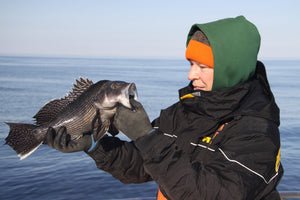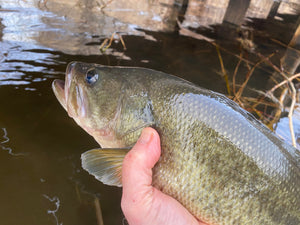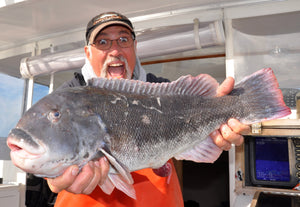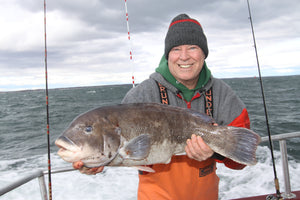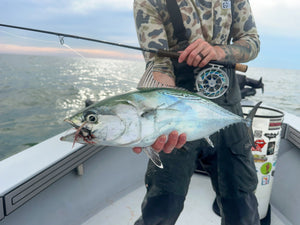Bang the Brush for Late Summer Bigmouths
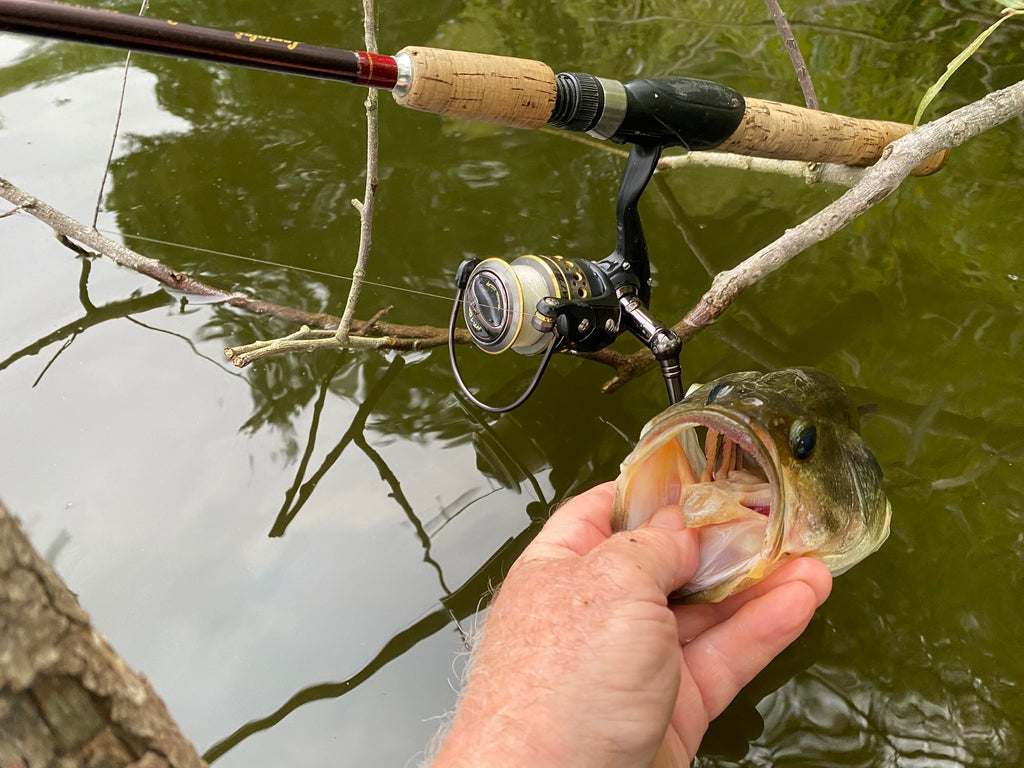
No matter how skilled an angler you may be, late summer can be a frustrating time for bigmouth bass fans. With the water hot and sun often intense, you can bet that most lunkers are looking to stay in the shade and hang tight where they’re least likely to be pressured by anglers.
In the not-too-distant past, that meant most big bass would simply hold under lily canopies and thick matts of surface weed. But those areas are the first to see weedless lures splash each morning these days, which often sends the biggest hawgs looking for new, less penetrable places to sulk. So, where do they head on the generally shallow, small lakes and ponds of Long Island? Think overhanging shoreline brush, the tangled branches of downed trees, and even several feet inside of phragmite and cattail edges.

Skip a jig & pig as far back into tangles like these to haul out the hawgs of summer. Photo courtesy of OutdoorTom.com.
This leaves serious bass fans with little resolve but to gear up and dig in during the mid-summer time slot unless they are willing to fish after dark. On the plus side, during late July, August and early September, it’s fairly easy to figure out where the fish are buried – just look for the nastiest, most intimidating tangles you can find. On the minus side, you’ll generally need heavy gear plus a bit of luck to separate the big girls from their hide-a-ways. That’s where the jig & pig comes into play. Many use this lure throughout the season and under a wide variety of conditions, but it truly excels during the summer swelter when almost no other approach is sufficient to get your lure up close and personal with bass that simply don’t want to come out to play.
There are several reasons a pig & jig approach brings success when other techniques draw hot-weather skunkings. For starters, these lures are heavy enough to punch through surface weeds and debris. They are also snag-free for the most part, if not quite weedless. Their large profile is a call to action, too, for fish that need to take advantage of big meals since they are holed-up in relatively small areas for most of the day. Add to this the advantage of being able to slow their sink rate with the addition of a soft-plastic creature body like a 4-inch Strike Rage DB Craw, Zoom Horny Toad or a Fat Cow 3” Craw Trailer Jig Strip, and their case is certainly a strong one. A final selling point is that this style jig comes in a multitude of colors, allowing anglers to match the hatch with frogs and baitfish or go for reaction strikes with bright colors and trailers that stand out in cloudy, stained and discolored water.

The author used a custom tied black/blue jig and Havoc trailer to lure this bigmouth out from under a floating dock. Photo by Felicia Scocozza.
If you are new to intense brush-beating jig & pig fishing, you may need to take a deep breath or two before giving it a shot. The most important thing to know is to show no fear when tossing these heavy-cover bass magnets into harsh environments. The nastier the spot, the more loudly it should call to you. Just make your best cast and worry about what happens next after you’ve set the hook. Be sure to beef up your gear for this, too. Typical setups run along the lines of a 7-1/2 foot, medium-heavy, fast tapered rod, a quality conventional reel like the Daiwa Lexa TW, and a minimum of 30-pound braid tipped by a three-foot length of 15- to 20-pound test leader material. Plan to keep your drag quite tight. There’s little room for a finesse battle with this technique. The only way to get a big fish out is to bear down and use a lot of muscle.
If all this sounds a bit dicey, it is. Expect to lose a significant number of jigs if you do this right – but making the commitment to really probe the toughest tangles can have big pay-offs. Don’t just toss your jig along the edge of the mess. Instead, skip it far under tree limbs or flip it over low-hanging branches. In the latter case, allow your lure to slide down until it barely reaches the water’s surface and then give it a little jiggle that creates nothing more than a slight ripple – it’s enough to drive sulking bass wild.

Dave Lengyel shows no fear when it comes to working jig & pigs though dense, shoreline cover. Photo courtesy of OutdoorTom.com.
Another trick that works with this routine is to throw repeatedly into shoreline tangles and even sticker bushes through which you can’t even see the water. The explosive strikes generated by this technique are some of the fiercest you’ll ever experience. Find a tight mix of lilies, marsh grass and brush and there’s a good chance a 14- to 20-inch bass will be waiting, maybe even in as little as 8 to 10 inches of water.
One off-the-wall trick that takes a little practice, and fortitude, to pull off, is probing deep behind phragmite and cattail edges. If you hear an occasional big splash several feet inside the edge or see the stalks moving as a bulky bass pushes through the web, try hand-tossing or flipping a jig high in the air over the weeds and allowing it to fall straight into the mess. The casting part to this approach is fun and you’ll quickly learn you need to get the angle of release just right for the lure to go straight up and land just 10 to 12 feet away. The retrieval part is tough. Basically, if you don’t draw a reaction strike as the lure makes its initial impact, you’ll need brute force to wrestle it out of the stalks. Admittedly, this method is a lot of work, but it’s a technique that bass rarely see, which makes it extra valuable.
Of course, hooking a bass this way is only half the battle. Good luck hauling her out of the sticks.
- Bryce Poyer

